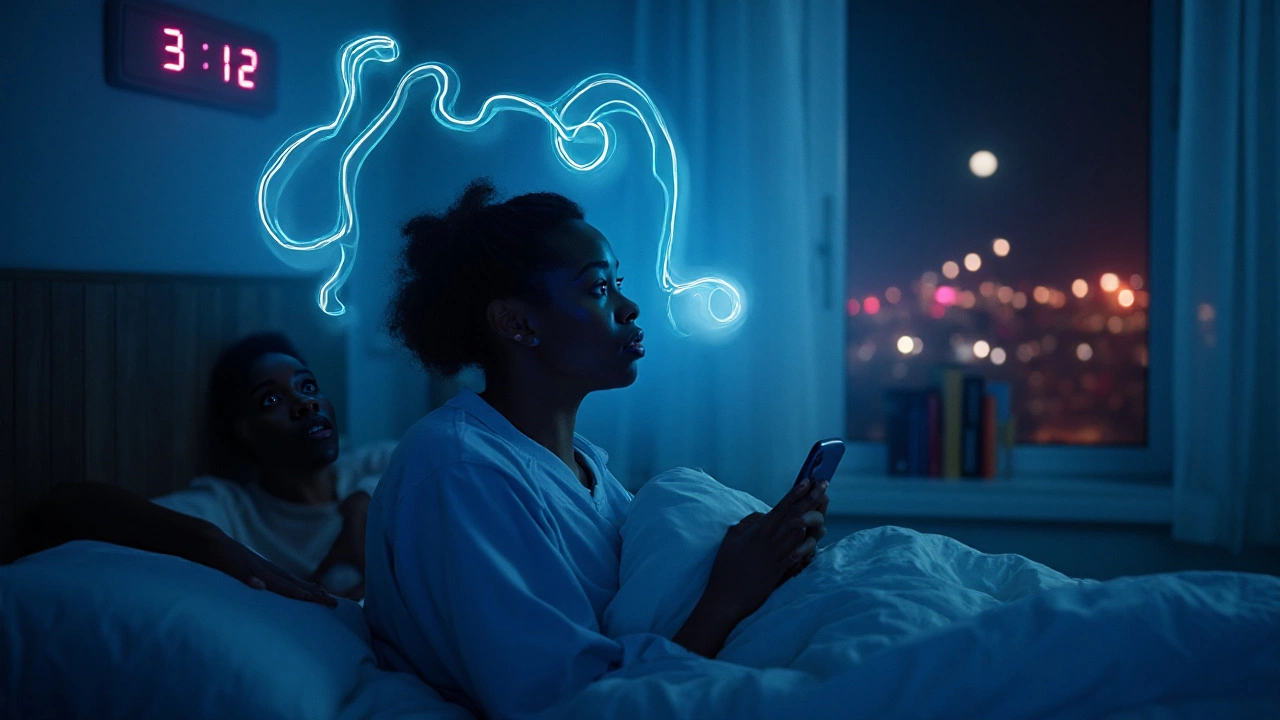
Sleep Disorders and Anxiety: Causes, Signs, and Evidence‑Based Fixes
Struggling with sleepless nights and racing thoughts? Learn how sleep disorders and anxiety fuel each other and what actually works to break the cycle.
Can't fall asleep? Tossing and turning night after night? You're not alone. Insomnia affects millions and can mess with mood, focus, and health. The good news is that most sleep problems have simple fixes. Below you’ll find the main reasons people stay awake and easy steps you can try today.
First, figure out what’s keeping you up. Stress is a top culprit – worry about work, bills, or family can flood the brain with thoughts. Caffeine, nicotine, and even alcohol can trick your body into thinking it's still daytime, especially if you consume them after lunch. Light exposure matters too; bright screens or a bedroom that isn’t dark enough confuse your internal clock.
Medical issues also play a role. Pain, asthma, acid reflux, or an overactive thyroid can make it hard to relax. Certain medicines, like some antidepressants, steroids, and even cold medicines, list insomnia as a side effect. If you’ve started a new prescription and sleep got worse, talk to your doctor.
Finally, habits matter. Going to bed at different times each night, napping for hours during the day, or using the bed for work can break the link between your bedroom and sleep. When the brain sees the bed as a place for activity, it resists shutting down.
Now that you know the triggers, try these simple changes. Aim for a regular sleep schedule: go to bed and wake up at the same time, even on weekends. Your body loves routine, and it will start winding down automatically at the right hour.
Limit caffeine after 2 p.m. and avoid nicotine close to bedtime. If you love a nighttime drink, choose herbal tea or warm milk instead of alcohol, which can disrupt deep sleep stages.
Turn off bright screens at least an hour before bed. If you must use a device, switch to night mode or wear blue‑light blocking glasses. Dim the lights, close the curtains, and keep the room cool – around 65 °F (18 °C) is ideal for most people.
Create a wind‑down ritual. A short walk, gentle stretches, or reading a paperback can signal to your brain that it’s time to relax. Avoid heavy meals and vigorous exercise right before sleep; both raise core temperature and make it harder to drift off.
If thoughts keep looping, try a quick journaling session. Write down worries, tasks, or anything else on your mind, then close the notebook. This tricks the brain into thinking the issue is handled.
When you’re in bed and still awake after 20 minutes, get up. Go to another room, do a low‑stimulus activity like a puzzle or breathing exercise, and return to bed only when you feel sleepy. Staying in bed awake can reinforce the association between the bedroom and frustration.
Natural supplements like melatonin, magnesium, or valerian root can help occasional sleeplessness, but they’re not a long‑term fix. Talk to a pharmacist or doctor before adding anything new.
If you’ve tried these steps for two weeks and still wake up feeling unrested, it may be time to see a professional. A sleep specialist can check for underlying disorders such as sleep apnea or restless‑leg syndrome and recommend targeted treatments.
Insomnia doesn’t have to control your life. By spotting the triggers and building a calming nighttime routine, most people can reclaim a good night’s rest. Start with one change today, track how you feel, and keep tweaking until sleep becomes natural again.

Struggling with sleepless nights and racing thoughts? Learn how sleep disorders and anxiety fuel each other and what actually works to break the cycle.